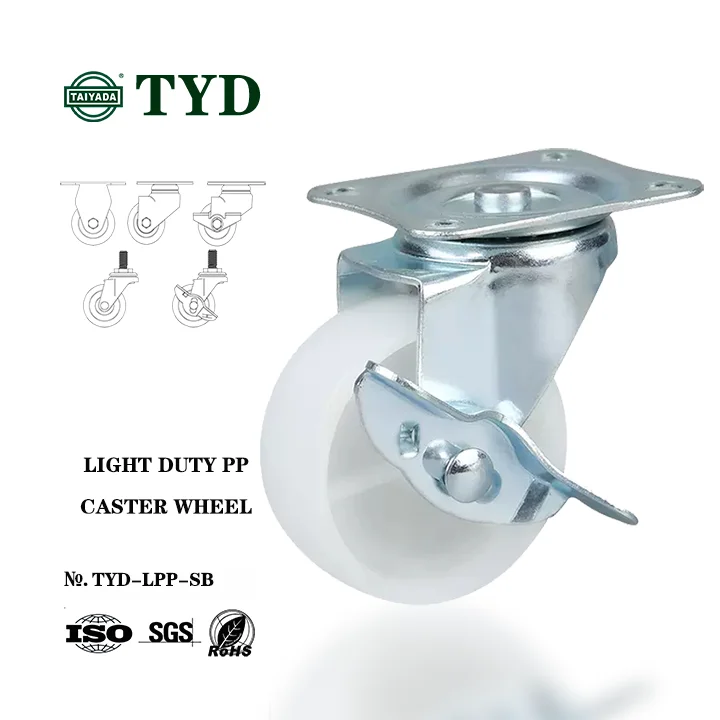In the design and manufacturing of furniture, choosing the right casters is crucial for enhancing practicality and user experience. The braking system of casters is an essential component of their functionality. Dual brake and side brake are two common braking systems. This article will focus on how to easily distinguish between these two brake systems.
What Are Dual Brake and Side Brake?
Dual Brake: A dual brake system typically has braking mechanisms on both directions of the caster, meaning both the front-back and left-right directions. This design ensures that the furniture can be locked in place regardless of the direction of movement by simultaneously locking both front-back and left-right movements.
Side Brake: A side brake system has a braking mechanism only on one side of the caster, usually in a single direction (such as the left-right direction). This means that the furniture can move freely in the front-back direction but will lock in the side direction when it is nearly perpendicular to the ground.
How to Easily Distinguish Between Dual Brake and Side Brake?
-
Visual Inspection
The most straightforward way to distinguish is through visual inspection of the caster braking mechanisms.
- Dual Brake: Typically has braking mechanisms in both the front-back and left-right directions, appearing more complex. You might see two separate brake levers or buttons, one for the front-back direction and one for the left-right direction.
- Side Brake: Usually has only one braking mechanism, which locks only in one direction (typically the left-right direction). It appears relatively simple, possibly with only one brake lever or button.
-
Functional Test
A simple functional test can accurately distinguish the dual brake and side brake.
- Dual Brake: Try moving the furniture in both the front-back and left-right directions, then use the brake mechanism to lock it. You will find that it cannot move in any direction because all directions are locked.
- Side Brake: Similarly, move the furniture in both the front-back and left-right directions, then use the brake mechanism to lock it. You will find that the furniture can move freely in the front-back direction but locks in the left-right direction.
-
Usage Scenario
Based on the requirements of the usage scenario, one can also distinguish between dual brake and side brake.
- Dual Brake: Suited for scenarios requiring all-direction locking, such as desks, office chairs, ensuring the furniture does not move with slight collisions during use.
- Side Brake: Suited for scenarios mainly needing to prevent lateral movement, such as cribs, lightweight storage cabinets, where some flexibility in the front-back direction is required.
Conclusion
Distinguishing between dual brake and side brake in furniture casters can be achieved through simple visual inspection, functional testing, and understanding the requirements of usage scenarios. The dual brake system provides all-direction locking, suitable for scenarios requiring high stability, while the side brake system primarily prevents lateral movement, suitable for scenarios needing some flexibility. We hope this article helps you understand and select the appropriate caster braking system for your furniture more easily.


